Pool on the site: types, construction and arrangement
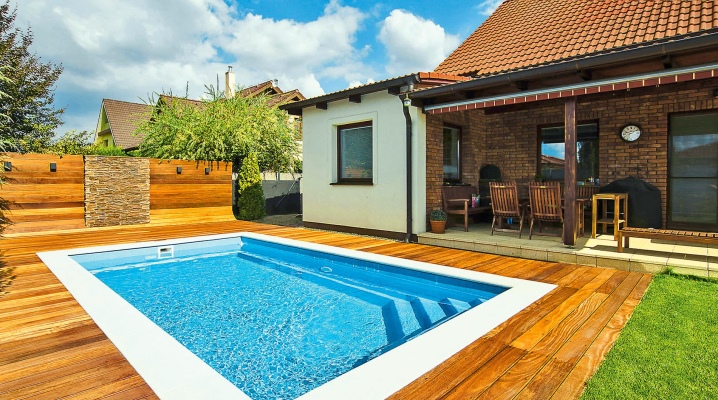
The pool on the personal plot is a rational solution for organizing recreation for adults and children and serves as an excellent decoration for the plot. Let's consider in more detail the types, construction and arrangement of the pool on the site.
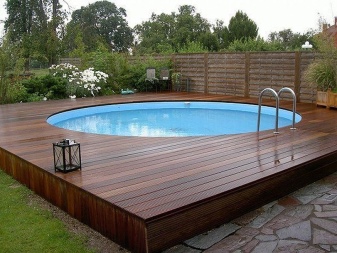
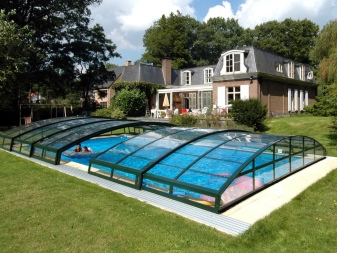
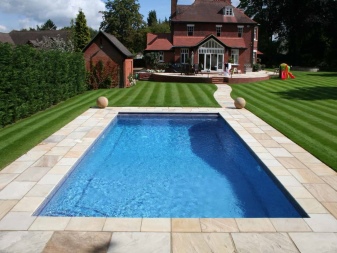
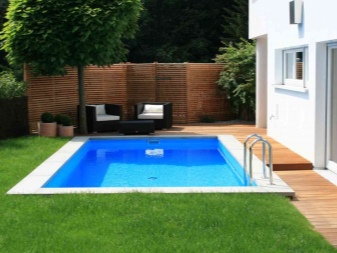
Varieties
The classification of outdoor pools is made according to such characteristics as the type of construction, material of manufacture and the method of water intake for filtration. According to the first criterion, the pools are divided into several options.
Wireframe
Such reservoirs are arranged quite simply and consist of a metal or metal-plastic frame and sheathing material - plastic film or other waterproof material. In conditions of a modest budget, the skeleton of the tank can be built from scrap materials - boards or bars that can be found in any household.
Difficulties in the construction of frame frames, as a rule, do not arise. An indispensable condition is only a flat surface on which the tank will be installed, as well as compliance with the assembly rules. The advantages of frame structures include ease of installation and dismantling, high tightness, water resistance and maintainability.

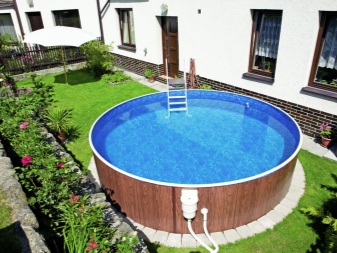
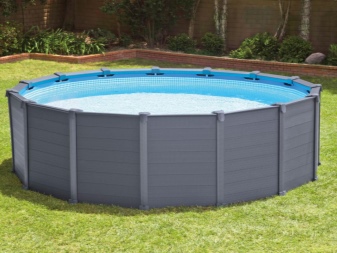
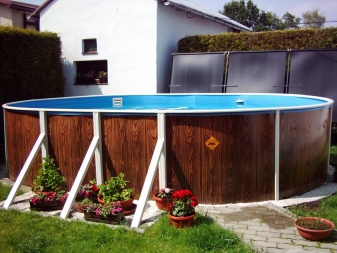
Wireframe Models easy to clean, if necessary, they can be drained and moved to a new place, are not too expensive and quickly warm up. The disadvantages include the need to dismantle the structure for the winter period, which is due to the risk of cracking of the cladding, as well as not too aesthetic appearance.
Moreover, tanks made of polyethylene film require regular updating: the material quickly becomes cloudy, loses its attractiveness and is vulnerable to accidental damage.
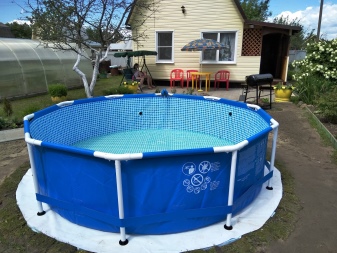
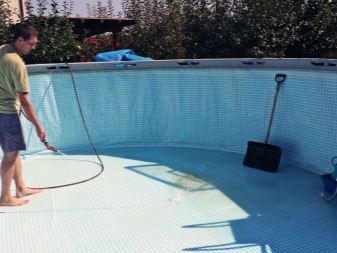
Inflatable
Inflatable pools enjoy high demand among summer residents, while the owners of cottages and private houses prefer more capital structures. Such models quickly inflate and deflate, have beautiful colors, are presented in a wide range and are relatively inexpensive.
Inflatable tanks are of two types: some have fully inflatable sides, and sometimes the bottom, while others only have a pop-up ring located at the top of the sides along the perimeter. The disadvantages of inflatable models include high risk of puncture, the need for careful preparation of the installation site, the obligatory arrangement of the substrate under the bottom, small dimensions and shallow depth.
Inflatable pools are more suitable for children and teenagers, while adults require more serious tanks.
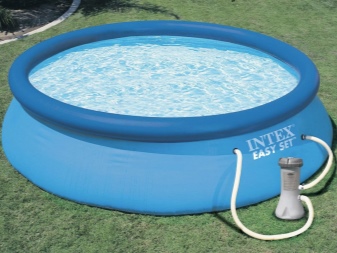
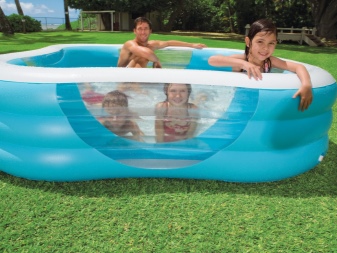
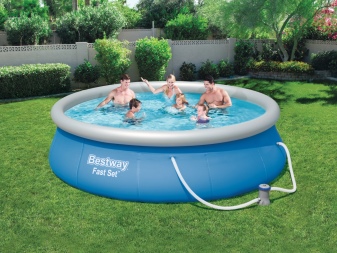
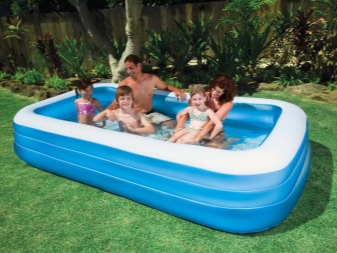
Stationary
Such basins are often called foundation pits, due to their burial into the ground and the need for earthworks. Stationary tanks are the most reliable and durable structures, they are capable of serving for decades. By the degree of deepening, the bowls of stationary structures are subdivided into fully buried, semi buried and shallow specimens. The latter do not require digging a deep pit and are located on the ground.
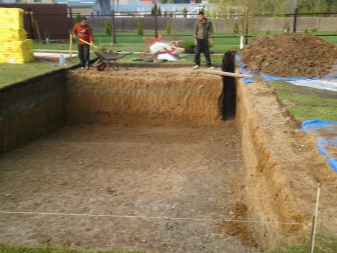


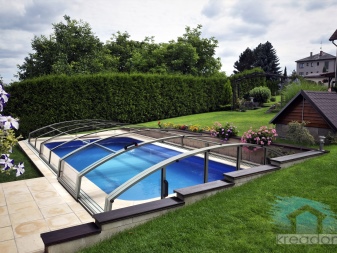
Several materials are used for the construction of stationary pools.
Plastic the bowls are sold ready-made and require deepening and arrangement. For their manufacture, the following materials are used:
- composite or fiberglass bowlsimpregnated with polyester resin, have low thermal conductivity and are resistant to temperature extremes; they are lightweight, environmentally friendly and very durable; composite containers are dug into the ground and covered with gravel;
- polypropylene bowls they are frost-resistant, easy to clean and can last up to 30 years; they also have low thermal conductivity, which is why the water in them does not cool for a long time;
- polycarbonate containers are environmentally friendly, tolerate temperature changes well and have a low cost.

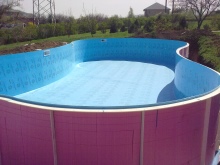
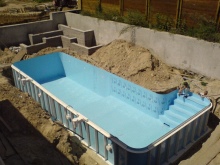
Price polymer bowls varies from 40 to 270 thousand rubles and depends on the size and depth of the product. The installation of such tanks is usually not difficult, but it should be noted that bowls with a height of more than 1.3 m, when buried in the ground, require concreting. An indispensable condition for the long-term operation of plastic pools is a mild climate. According to the observations of their owners living in cold regions, due to sharp temperature changes, the walls of the tank become covered with a network of microcracks over time and require repair. But in warm areas, a polymer tank will be the most suitable option and will require much less investment and labor than a concrete structure.
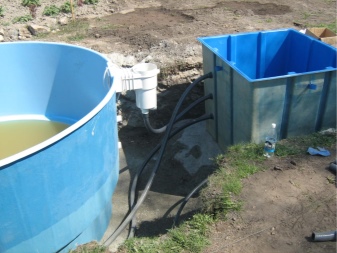
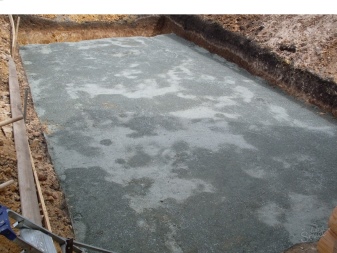


Concrete pools require pit preparation and are built on the principle of a solid foundation... These tanks are very strong and durable, but they are expensive. Mosaic, ceramic tiles or PVC film are used for facing concrete boards. Concrete structures are great for cold climates, easily tolerate temperature extremes, wind and precipitation. In addition, the concrete bowl can be given any shape and bring to life the most daring design developments. Such pools must be equipped with a filtration system that allows you to keep the tank clean. According to the method of water intake for cleaning, stationary models are divided into two types.
- In the overflow pool outside the bowl there are special drains that collect the splashed water and drain it into a special tank. From there, thanks to the operation of the pumps, the liquid enters the filtration unit. The water level in such pools is flush with the rim, and since a significant proportion of pollution is in the upper layer of water, the most polluted liquid goes to the drains. As a result, the more people are in the pool at the same time, the more intensively the polluted water splashes into the drain, the more efficiently it is purified. Such a system for draining dirty liquid is suitable exclusively for stationary pools, and is not used in frame and inflatable models.
- In the skimmer pool stationary type dirty water suction holes are located in the middle of the sides. This is the main disadvantage of this method, since dirt and foam floating on the surface are not absorbed by the skimmers and remain in the pool.
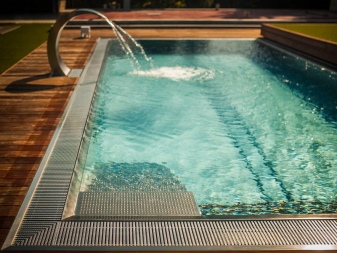
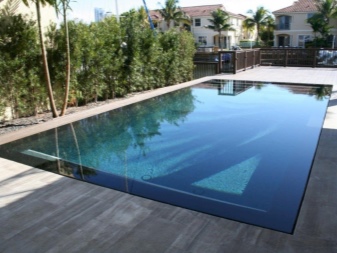


Recessed pool made of expanded polystyrene blocks is an excellent alternative to concrete structures... Many manufacturers have established the production of foam blocks with through holes, which greatly simplifies the installation of vertical fittings and significantly reduces the time for building the tank. Expanded polystyrene is not afraid of water, has a high density, holds water pressure well and has good hydro and thermal insulation.
From above, the foam blocks are trimmed with any moisture-proof material, not forgetting to seal the seams.
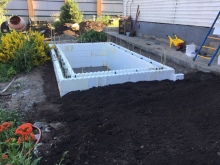

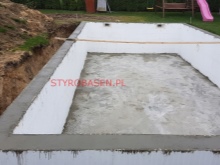
Dimensions (edit)
The dimensions and volume of the tank depend on its shape, material of execution and purpose, namely:
- lightweight inflatable models for toddlers have a wall height of no more than 17 cm and a diameter of 100 cm, while the height of adult specimens is 107–120 cm, and the diameter reaches 3 m;
- concerning factory frame structures, then their diameter ranges from 2.5 to 6.5 meters or more with an average side height of 1.2 m;
- another thing - capital stationary pools, after all, their size is chosen depending on the number of family members, the size of the plot and the availability of funds. It can vary from 3 to 10 meters or more in length with a depth of 1.2–1.8 m.

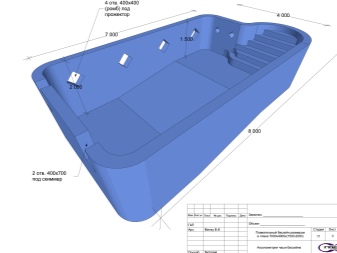
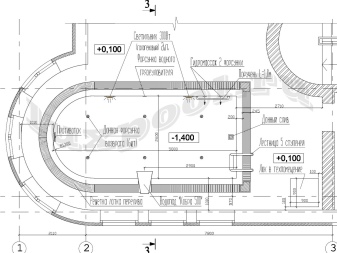
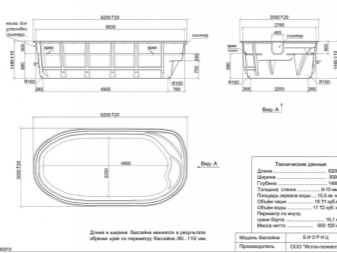
Where to locate?
The location of the pool in the country or in a country house depends on many factors. You can place the tank in the backyard of a personal plot, in a garden, vegetable garden or in the courtyard of a private house. A prerequisite is the presence of sunlight and the absence of shade from tall trees and buildings. And it is also necessary to watch so that there are no coniferous and deciduous plants nearby, as well as flower beds with pollen-rich flowers. Otherwise, leaves, needles, tree bark and pollen will pollute the pool water.
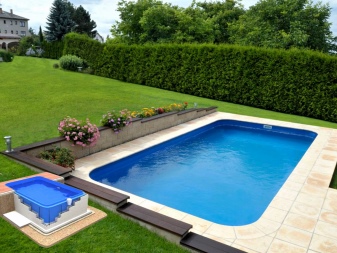
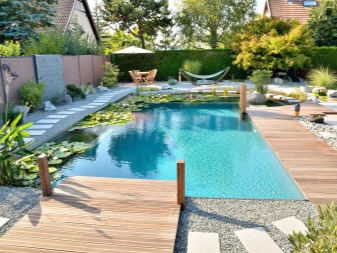
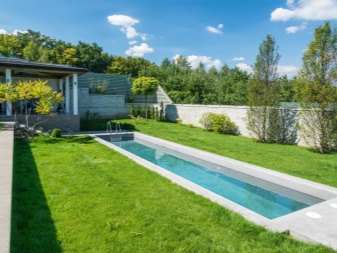
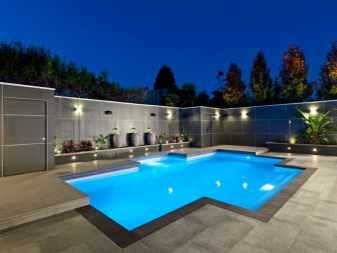
You should also pay attention to the type of soil: an ideal option would be a site with clay soils, which in the future will act as additional waterproofing during the construction of a stationary pool.
In addition, the site should be located near the water supply and sewerage system, groundwater should not lie too close, and the terrain should be even, without holes and slopes. It is advisable to locate the pool away from street fences, animal enclosures and power lines.
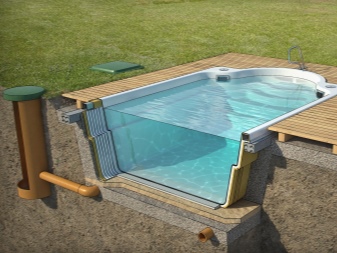
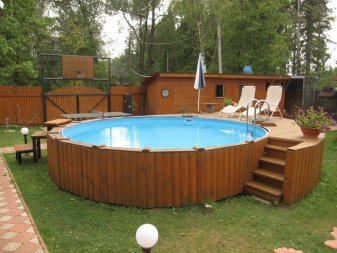
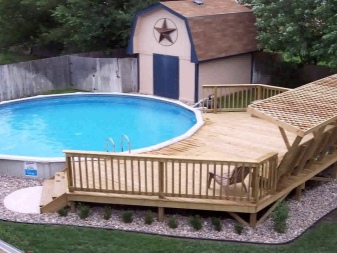
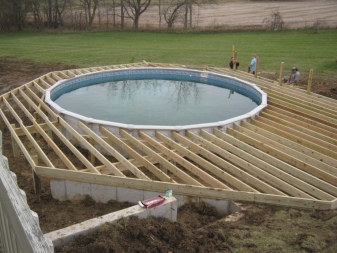
How to build with your own hands?
Swimming pool construction is a rather complicated and very responsible process. It is important not only to draw up a project correctly and make competent calculations, but also to improve both the pool itself and the adjacent territory. Below is a step-by-step algorithm for building a pit-type tank with a concrete base and decorative materials.
- On the selected site, markings are made and a pit is dug, making a "allowance" of 20 cm on each side relative to the dimensions indicated in the project. The depth is chosen individually: if you plan to jump into the water from the side, then it should be 2.5 m, but if the bathers go down the stairs into the bowl, then 1.5–2 m.
The bottom of the pit should have a slope of 4 cm by 1 m towards the drain.
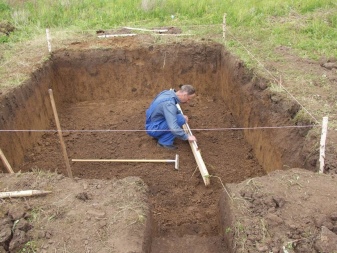
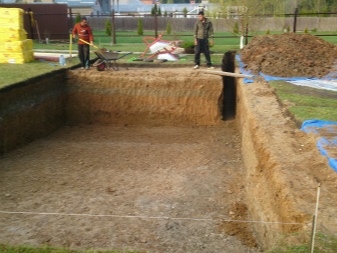
- A layer of sand is poured and tamped at the bottom of the pit, then a layer of gravel is poured on which 2 layers of roofing material are placed. The sheet material is laid with an overlap of 3-4 cm, and the joints are treated with a sealant or mastic.
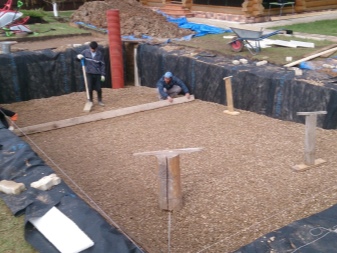

- Then the formwork is installed, exactly repeating the shape of the future tank. In this case, wooden boards, plastic panels or special shields are used.
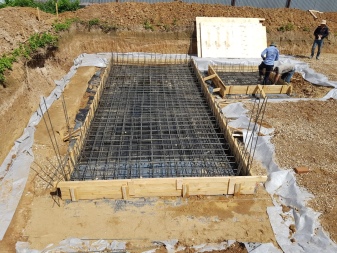
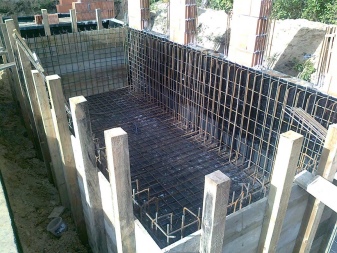
- Next, they take cement of the M350 or M400 brands with a water resistance index W6 or other heavy concrete, which contain plasticizers or hydrophobic additives, and concreting the walls and bottom.
When pouring concrete inside the formwork, be sure to leave holes for water pipes and drain.
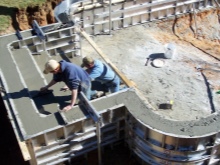
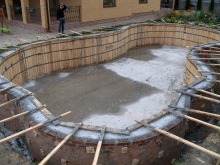
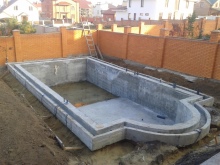
- At the end of concreting waiting for the complete hardening of the cement, after which they start finishing workusing ceramic tiles, polypropylene or composite materials for this.
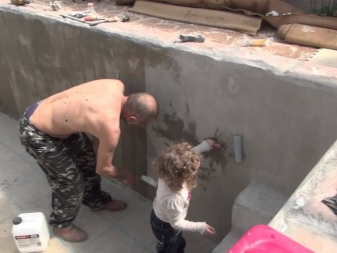
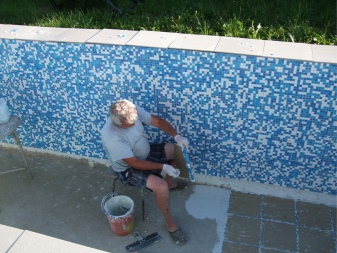
Arrangement Tips
After the pool is ready, it must be properly designed. Landscaping is a very exciting process. With a creative approach, it allows you to create a magical atmosphere of coziness and comfort. It is worth paying attention to the following recommendations:
- looks very impressive illumination of the bottom and walls of the tank, as well as the installation of lamps and lanterns; in addition to a powerful decorative function, lighting allows you to swim even after it gets dark outside;
- close attention should be paid to and recreation area design - territory adjacent directly to the pool; it can be laid out with marble or artificial stone, add flower beds with beautiful plants and install sun loungers;
- look very nice small architectural formssuch as geysers, cascading waterfalls and sculptures;
- in a not too hot climate, one might think about pool glazing; in addition to its practical function, the transparent dome is highly decorative and can make the pool a central element of landscape design.
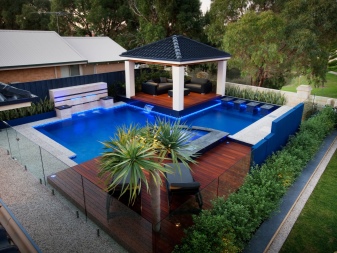
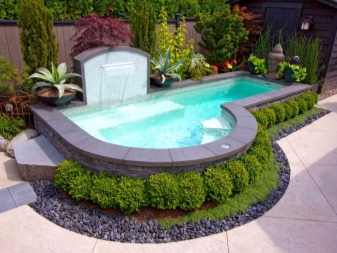
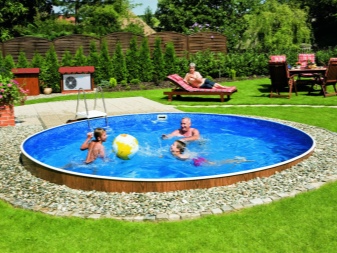
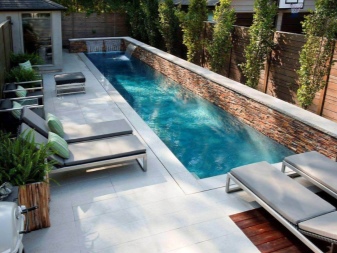
Beautiful examples
If desired and with a professional approach, an outdoor pool can be turned into a favorite resting place for households, as well as create an indescribable atmosphere of warmth and comfort around it. To do this, you just need to choose the right decor elements and harmoniously fit them into the surrounding landscape.
- The blue surface of the water in combination with lush greenery looks very impressive.
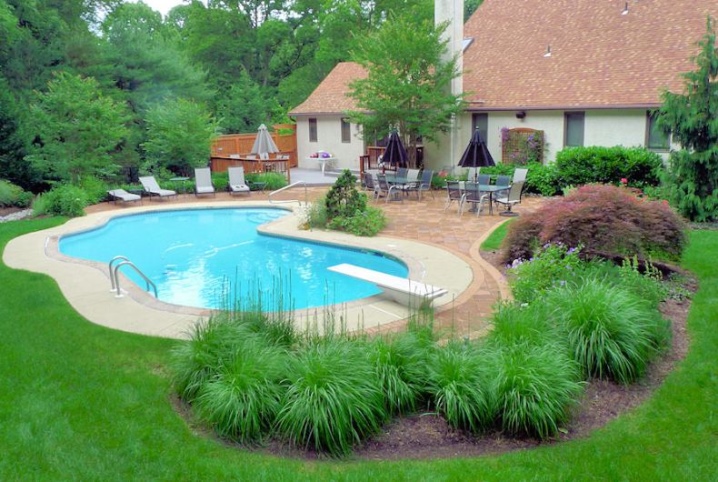
- The decoration of the adjacent space with stone tiles and beautiful flowers gives the reservoir a stylish look and is in perfect harmony with the buildings.

- The use of "wild" bush, waterfalls and lighting transforms the pool into a fabulous corner.
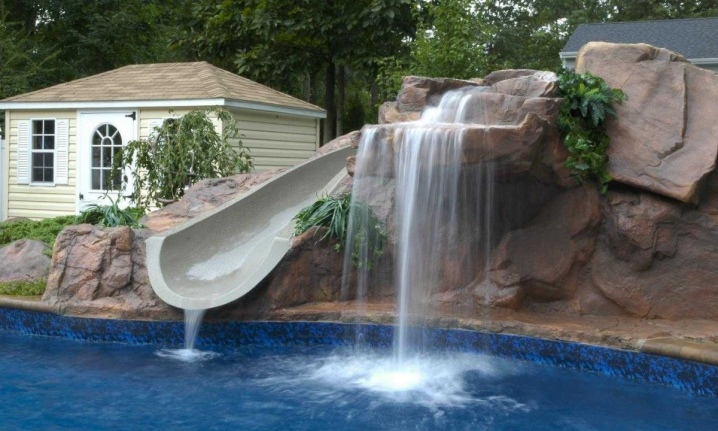
- The pool of the original form will not leave anyone indifferent.
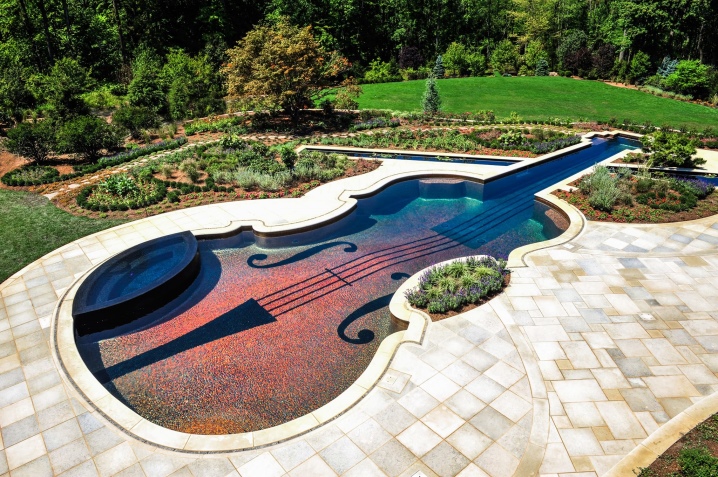
- The frame pool at the summer cottage is stylish and functional.
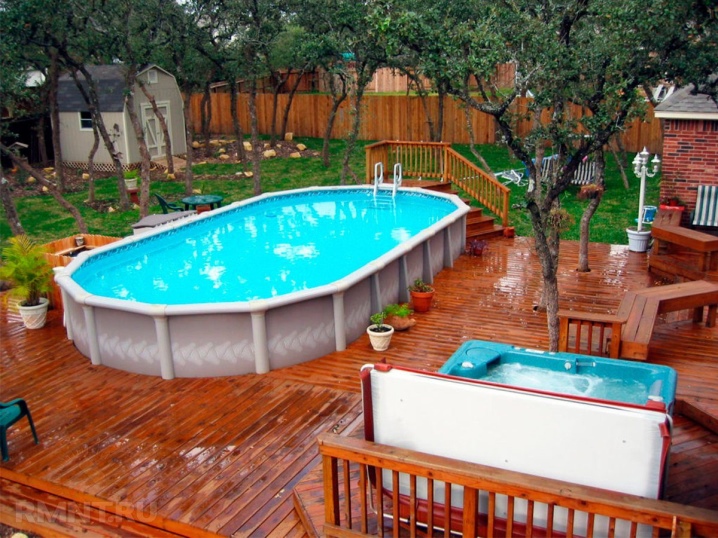
How to make a do-it-yourself pool on the site, see below.



































































The comment was sent successfully.